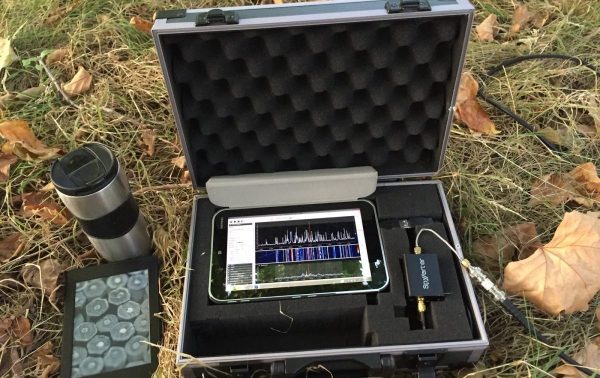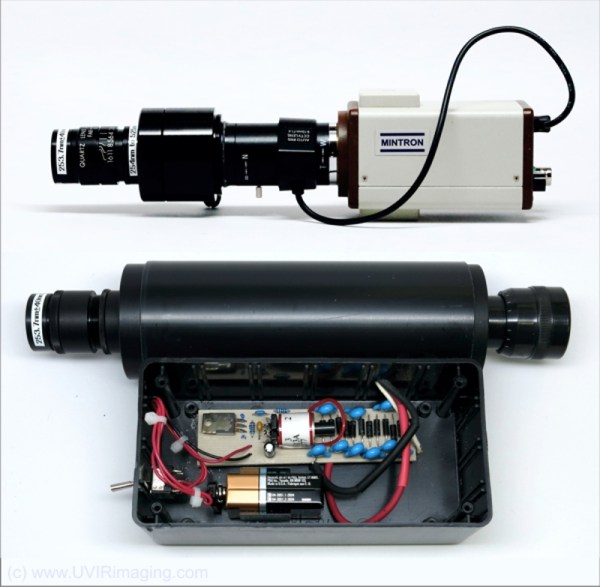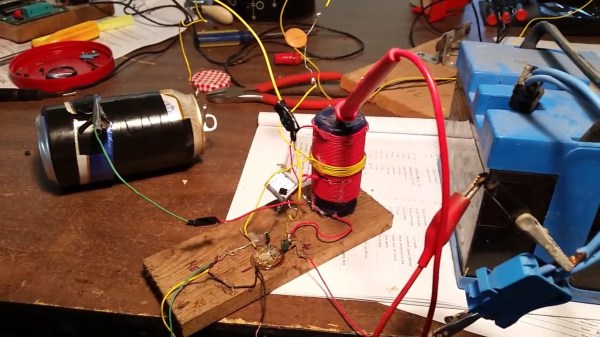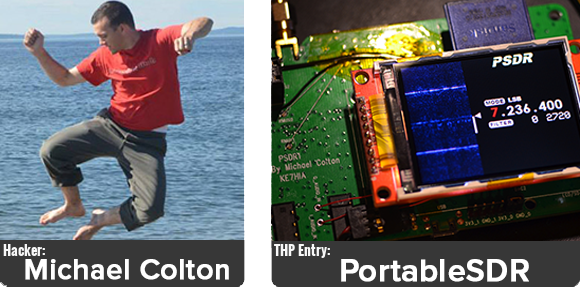Shortwave listening has always been a mainly nocturnal hobby. To get the real DX, one had to wait for favorable ionospheric conditions after sunset and spend hours twisting knobs while straining to pick voices from half a planet away out of the noise. But who has time for that in today’s world? And what of the poor city-dwelling SWL, with antenna limitations and often elevated noise floor in the urban jungle?
Continue reading “Cache Shortwave Signals For Later With This SDR Spectrum Grabber”
shortwave37 Articles
BST-1 Car Shortwave Receiver
Commuting is a pain. Luckily, nearly every car has some sort of radio or other audio player to while away the hours stuck in traffic. However, most of those radios sport AM and FM bands, along with a weather band and–maybe–a long wave band. What if you prefer shortwave?
[Thomas] posted a review of the BST-1, a car-friendly shortwave receiver. The device is made to mount out of sight–presumably near an external antenna. It beams the shortwave signal to the car’s FM radio. The control is a small key fob and even if you aren’t interested in the radio itself, the user interface design is somewhat interesting.
Seeing The Truly Invisible With DIY Shortwave UV Imaging
We’ve all seen how to peel IR filters off digital cameras so they can see a little better in the dark, but there’s so much more to this next project than that. How about being able to see things normally completely outside the visual spectrum, like hydrogen combustion or electrical discharges?

[David Prutchi] has just shared his incredible work on making his own shortwave ultraviolet viewers for imaging entirely outside of the normal visible spectrum – in other words, seeing the truly invisible. The project has not only fascinating application examples, but provides detailed information about how to build two different imagers – complete with exact part numbers and sources.
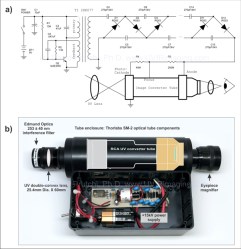 If you’re thinking UV is a broad brush, you’re right. [David Prutchi] says he is most interested in Solar Blind UV (SBUV):
If you’re thinking UV is a broad brush, you’re right. [David Prutchi] says he is most interested in Solar Blind UV (SBUV):
Solar radiation in the 240 nm to 280 nm range is completely absorbed by the ozone in the atmosphere and cannot reach Earth’s surface…
Without interference from background light, even very weak levels of UV are detectable. This allows ultraviolet-emitting phenomena (e.g. electrical discharges, hydrogen combustion, etc.) to be detectable in full daylight.
There is more to the process than simply slapping a UV filter onto a camera, but happily he addresses all the details and the information is also available as a PDF whitepaper. [David Prutchi] has been working with imaging for a long time, and with his sharing of detailed build plans and exact part numbers maybe others will get in on the fun. He’s also previously shared full build plans for a Raspberry Pi based multispectral imager, [David’s] DOLPHi Polarization Camera was a finalist in the 2015 Hackaday Prize, and he spoke at the Hackaday SuperConference about the usefulness of advanced imaging techniques for things like tissue analysis in medical procedures, and landmine detection for the purposes of cleaning up hazardous areas.
SDR Cape For BeagleBone
In the old days if you wanted to listen to shortwave you had to turn a dial. Later, you might have been able to tap in a frequency with a keypad. With modern software-defined radio (and the right hardware) you can just listen to the entire high-frequency spectrum at one time. That’s the idea behind KiwiSDR, an open source daughterboard (ok, cape) for the BeagleBone.
The front end covers 10 kHz to 30 MHz and has a 14-bit converter operating at 65 MHz. There is a Xilinx Artix-7 A35 FPGA onboard and a GPS, too. The design is open source and on GitHub.
The interface uses the OpenWebRX project for a powerful HTML 5 interface. You can see a video of its operation below or, if you can get one of the four available slots, you can listen online. From a network point of view, the demo station in Canada worked best for us. However, there are also stations in New Zealand and Sweden.
Secret Radio Stations By The Numbers
One thing has stayed with the James Bond movie franchise through the decades: Mr. Bond always has the most wonderful of gadgets. Be it handheld, car-based, or otherwise, there’s always something to thrill that is mostly believable.
The biggest problem with all of those gadgets is that they mark Commander Bond as an obvious spy. “So Mr. Bond, I see you have a book with many random five character groups. Nothing suspicious about that at all!” And we all know that import/export specialists often carry exploding cufflinks or briefcases full of unknown electronics in hidden compartments.
Just as steganography hides data in plain sight, the best spy gadgets are the ones that don’t seem to be a spy gadget. It is no wonder some old weapons are little more than sticks or farm implements. You can tell a peasant he can’t have a sword, but it is hard to ban sticks.
Imagine you were a cold war era spy living in a hostile country with a cover job with Universal Exports. Would you rather get caught with a sophisticated encryption machine or an ordinary consumer radio? I’m guessing you went with the radio. You aren’t the only one. That was one of the presumed purposes to the mysterious shortwave broadcasts known as number stations. These were very common during the cold war, but there are still a few of them operating.
Continue reading “Secret Radio Stations By The Numbers”
Minimal Mighty Mite
If you’re getting started building your own ham radio gear, it’s hard to imagine a more low-tech transmitter than the Mighty Mite, but [Paul Hodges, KA5WPL] took it one step further and rolled his own variable capacitor. (That’s the beer can with tape and alligator clips that you see on the left.)
A Mighty Mite is barely a radio at all. One transistor, capacitor, crystal and inductor in the form of a bunch of wire wrapped around a pill bottle form a minimalist oscillator, and then by keying this on and off with a switch, you’re sending Morse code. [Bill Meara], of the Soldersmoke Podcast, has been a passionate advocate of the Mighty Mite, suggesting that it can be made by scrounging the 3.57954 MHz colorburst crystal from an old analog TV set, which tunes the radio to a legal frequency for ham radio operators. (It will also probably work with other low-MHz crystals from your junkbox, but it won’t necessarily be legal.)
 If the crystal is “easily” scavengeable, and the rest of the radio is easily home-made, the tuning capacitor (obtainable from old AM/FM radios) can become the sticking point. So [Paul] cut up two aluminum “beverage” cans, wrapped the inner one in electrical tape, hooked up wires and made his own variable capacitor. By sliding the cans in or out so that more or less of them overlap, he can tune the radio to exactly the crystal’s natural frequency.
If the crystal is “easily” scavengeable, and the rest of the radio is easily home-made, the tuning capacitor (obtainable from old AM/FM radios) can become the sticking point. So [Paul] cut up two aluminum “beverage” cans, wrapped the inner one in electrical tape, hooked up wires and made his own variable capacitor. By sliding the cans in or out so that more or less of them overlap, he can tune the radio to exactly the crystal’s natural frequency.
If you’re interested in building a Mighty Mite, you should definitely look at the topic on Soldersmoke. There are more build instructions online as well as plans for an optional filter to take off the harmonics if you’re feeling ambitious.
If you’re not a Morse code wiz, we can’t help but note that you could replace the key with a simple FET (we’d use a 2N7000, but whatever) and then you’ve got the radio under microcontroller control. Scavenge through Hackaday’s recent Morse code projects for ideas, and we’re sure you’ll come up with something good.
THP Hacker Bio: Michael R Colton
With many hackers out there realizing how much you can do with a few RF blocks connected to a computer, it’s no surprise software defined radio would make a showing in the semifinalists for The Hackaday Prize. [Michael]’s project is the PortableSDR, a small, self-contained unit that handles just about everything below 30MHz. No, [Michael] isn’t dealing with gigahertz accessible with fancier SDRs, but that’s not the point: PortableSDR is meant to do everything – vector analysis, a neat waterfall display, transmit and receive – in a small, portable package you can take anywhere. It’s also fairly cheap to build, and of course completely open source.
This isn’t [Michael]’s first rodeo; he’s built a number of equally cool projects before. He was kind enough to send in a short bio, available below.

